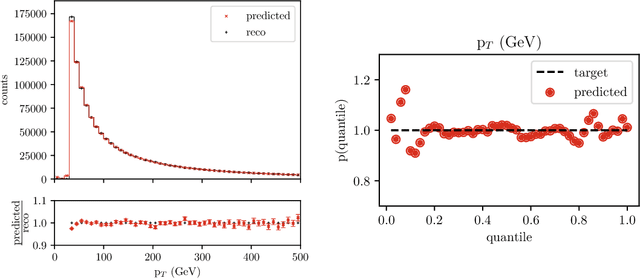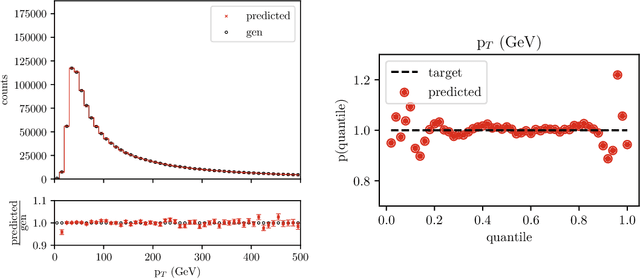Harrison B. Prosper
Modelling Sampling Distributions of Test Statistics with Autograd
May 03, 2024Abstract:Simulation-based inference methods that feature correct conditional coverage of confidence sets based on observations that have been compressed to a scalar test statistic require accurate modelling of either the p-value function or the cumulative distribution function (cdf) of the test statistic. If the model of the cdf, which is typically a deep neural network, is a function of the test statistic then the derivative of the neural network with respect to the test statistic furnishes an approximation of the sampling distribution of the test statistic. We explore whether this approach to modelling conditional 1-dimensional sampling distributions is a viable alternative to the probability density-ratio method, also known as the likelihood-ratio trick. Relatively simple, yet effective, neural network models are used whose predictive uncertainty is quantified through a variety of methods.
Simulation-Based Frequentist Inference with Tractable and Intractable Likelihoods
Jun 13, 2023Abstract:High-fidelity simulators that connect theoretical models with observations are indispensable tools in many sciences. When coupled with machine learning, a simulator makes it possible to infer the parameters of a theoretical model directly from real and simulated observations without explicit use of the likelihood function. This is of particular interest when the latter is intractable. We introduce a simple modification of the recently proposed likelihood-free frequentist inference (LF2I) approach that has some computational advantages. The utility of our algorithm is illustrated by applying it to three pedagogically interesting examples: the first is from cosmology, the second from high-energy physics and astronomy, both with tractable likelihoods, while the third, with an intractable likelihood, is from epidemiology.
Implicit Quantile Neural Networks for Jet Simulation and Correction
Nov 22, 2021

Abstract:Reliable modeling of conditional densities is important for quantitative scientific fields such as particle physics. In domains outside physics, implicit quantile neural networks (IQN) have been shown to provide accurate models of conditional densities. We present a successful application of IQNs to jet simulation and correction using the tools and simulated data from the Compact Muon Solenoid (CMS) Open Data portal.
 Add to Chrome
Add to Chrome Add to Firefox
Add to Firefox Add to Edge
Add to Edge